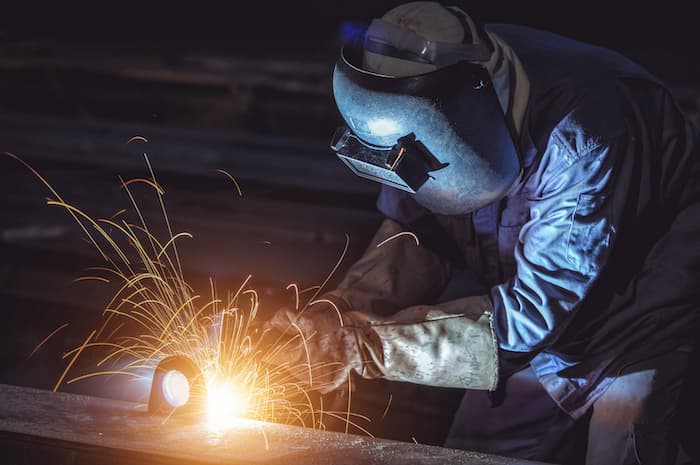Welding is an industrial manufacturing process in which two or more parts are fused to form a union as the parts cool by heat, pressure, or both. Welding is often used for fusing metal and thermoplastic materials. In some cases, welded production of wood materials can be made. Depending on the materials used, welded manufacturing may require special processes and techniques.
The assembled parts are defined as "base material". The material that provides fusing during welded manufacturing and is added during the process is called "filling material" or "consumable". Consumables used can be:
Consumable electrode (for arc welding application in welded joining process) Electrical energy is used to create the heat required for melting metals in arc welding or arc welding. The heat energy obtained from electrical energy joins metal to metal. After the molten metals are fused and cooled, the "bonding process" is completed. When performing arc welding, a metal rod is used to melt metals at the point of contact. Arc welding is a type of welding in which a suitable power source is used to create an electric arc between the metal rod, that is, the "electrode", and the base material.
The composition of consumables used when welding is intended to be similar to the base material. When selecting consumables for this purpose, care should be taken to ensure that the base material and the filler can create a homogeneous weld. However, there are also processes in which fillers with different compositions and properties are used, such as in brittle cast iron welding processes. These types of sources are called heterogeneous sources.
When the welding process is completed, the completed welded connection part is defined as a "welded connection" in the industrial process.

How is Welding Done?
The processes carried out in welded manufacturing working environments can be examined under 3 main headings joining metals, joining plastics, or joining woods.
Joining Metals
Unlike brazing or brazing, which does not melt the base metal, welding is a process that uses high heat to melt the base material. Usually, by the way, filler is used.
The high-temperature heat causes the formation of a weld pool of molten material that cools to achieve cohesion, which must be stronger than the base metal. Pressure can also be used alongside heat or alone to create a welding.
The use of shielding gas is also useful to prevent contamination or oxidation of molten fillers during welding.
Bonding Plastics
In plastic welding, heat at high temperatures is used to fuse materials. The process is carried out in 3 main steps:
In the application of the plastic welding method, the joining stage is done using external or internal heating methods.
Wood Joining
In the fusing of wood materials, the heat released during friction is used. In order to bond the parts in the materials to be joined, the base material is first subjected to great pressure. Then, heat is created with the energy obtained from the linear frictional motion.
Thus, it is ensured that wood materials are joined in seconds without bonding equipment such as glue or nails. The process is carried out extremely quickly and the wood welding process is completed.
What is Source Quality?
Weld quality assurance can be defined as the detection of welds with the help of technological methods and actions used to test or secure the quality of welds and to verify the presence, location, and footprint of welds. If the process of joining two or more metals, plastics, or wood is not carried out according to the appropriate specifications, that is, if the weld does not meet the quality requirements, the weld area may fail to bear the loads encountered during its lifetime and may break.
After the welding process is completed, standard welding tests and analyses are performed to determine that the weld has the appropriate quality and accuracy. These tests are usually performed using analysis methods that focus on the quality and strength of the product demonstrated. Some standard technological testing and analysis methods are used to determine whether the welds meet the welded manufacturing qualification criteria. With these methods, the presence, location, and scope of the source can be controlled.
For more detailed information about welded manufacturing, please contact us using our contact information.